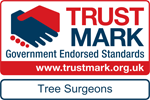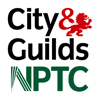“Scare-mongering in some cases has resulted in trees being felled unnecessarily,” says Chris Cooper-Abbs, arborist, health & safety advisor and friend of Climbers Way Tree Care.

Tree owners have a legal duty of care in respect of their trees, and may be liable for injury to others caused by the fall of a tree or branch. In an attempt to avoid what they perceive to be a risk, some landowners have simply removed trees entirely – but Chris says the answer is actually more straight-forward than that. Under a legal framework of both civil and criminal law, the responsibilities for the health and safety of those on or near the land upon which a tree stands rests with the owner of that land.
“Landowners just need to have a plan or strategy for their trees,” Chris explains. “They need to start with a ‘stock take’ of the trees on their land: What have they got? What condition are they in? Who might be at risk from them? Using this information, the landowner can then establish a plan to manage risks in a balanced way so that those trees can be enjoyed safely. Only if a tree is identified as a significant risk is removal, perhaps, the answer.”
Chris studied arboriculture and is experienced in advising clients on tree management strategies. Today his company, Arb Matters, advise colleagues in the arboriculture and land based industries on quality, environmental and safety management, accreditations and compliance issues.
Could a landowner perform this ‘stock take’ themselves?
“Depending on the complexity or type of inspection required, and their own knowledge base – age of trees, proximity to public areas, signs of disease etc. – it would be possible for a landowner to do this themselves. It’s always worth calling in an expert in case of any doubt but this should not become a financially burdensome exercise,” Chris comments.

And does the same legislation apply to householders?
“Yes, it does, but we have to think about a proportionate response here,” Chris is quick to caution. “A large landowner, for example, with acres of historic woods, roadside trees and lots of visitors is likely to need a more comprehensive tree management strategy. However, if you’re a householder with just a couple of trees, we can scale down and simplify the actions you might need to take”.
What would Chris’s advice be to anyone who is responsible for trees?
“Get to know them! Be vigilant for any changes, both to the tree and in terms of potential risks. If in any doubt, call an expert. And document your observations and actions; should you find yourself in a legal situation, any records that you have pro-actively managed your trees could help provide supporting evidence that a landowner has taken reasonable care.”

If we want to find out more?
Chris recommends information produced by the National Tree Safety Group (NTSG).
“The NTSG is an advisory body approved the Health & Safety Executive (HSE) and comprising a range of interested parties, from English Heritage to the Forestry Commission and the Royal Institution of Chartered Surveyors. They have produced some useful advice and I’d particularly recommend their leaflets “Managing Trees for Safety” for larger landowners and “Common Sense Risk Management of Trees” for smaller ones,” says Chris.
Chris – like the Climbers Way Tree Care team – believes that trees are to be enjoyed and protected.
“Trees are essential to our planet; we need to be their guardians,” he says.










